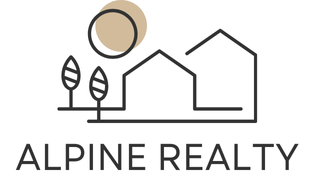Subsidence is a property owner’s worst nightmare. It is the motion of a building’s foundation due to changes in the underlying soil, often causing cracks in walls, floors, and ceilings. In the UK, subsidence is a common issue for homeowners, due largely to the specific types of clay soil found across much of the country. What measures, then, can you take to help prevent the risk of subsidence in your home? From understanding the role of trees in subsidence to knowing what insurance covers, this article provides a comprehensive guide.
Recognising the Signs of Subsidence
Before you can take steps to prevent subsidence, it’s crucial to understand what it looks like. Subsidence often manifests itself through a number of physical signs in and around your property.
Lire également : What Are the Benefits of Having a Fixed-Rate Mortgage in the Current UK Economy?
Cracks are the most common indicator of subsidence. These typically appear suddenly in plasterwork and will be thicker than a 10p coin. They often show up around doors and windows, as these are the weakest points of any building. While not all cracks are due to subsidence – buildings naturally shift and settle over time – those that are usually have a distinctive diagonal pattern.
Uneven floors, doors and windows that stick for no apparent reason, and wallpaper that’s crinkling at the wall/ceiling join are also signs that subsidence could be affecting your property.
Avez-vous vu cela : What Steps Should You Take to Contest a Property Valuation in Birmingham?
If you notice these signs, you should seek a professional opinion. A structural surveyor can help identify whether your home is experiencing subsidence or if the issues are due to other factors.
The Role of Trees in Subsidence
One of the major contributors to subsidence in UK homes is the presence of trees planted too close to the property. Trees, especially those with large root structures, can affect the stability of the soil.
When trees draw water from the soil, it can lead to soil shrinkage, particularly in clay soils which are prevalent in the UK. If this occurs beneath a house, it can cause the foundations to move, resulting in subsidence.
Therefore, one of the measures you can take to prevent subsidence is to carefully manage the trees around your property. This doesn’t mean you have to remove all trees from your garden – instead, consider their species, age, and distance from your home. Certain tree species require more water, and thus have a larger impact on soil stability.
A tree should ideally be planted a distance equal to its mature height away from the property. For existing trees causing concern, a tree surgeon can assess the risk and advise whether pruning or perhaps even removal might be necessary.
Maintaining Your Property’s Water Systems
Subsidence can often be caused by leakages from a property’s water systems. Leaking drains or burst pipes can wash soil away or cause it to soften, which can trigger the ground beneath a building to sink.
To prevent this, ensure your property’s water systems are in good condition. Regularly check for leaks and fix them promptly. Also keep gutters clean and free from blockages to prevent water spilling onto the ground around your house’s foundations.
In addition, consider the layout of your home’s exterior. Your garden should slope away from your property to encourage water to drain away from the building, not towards it.
Understanding Subsidence and Insurance
While taking preventative measures is crucial, it’s equally important to understand the role insurance plays when it comes to subsidence.
Subsidence is usually covered under buildings insurance. However, you might find your premiums increase following a claim, and some insurers might exclude subsidence from their coverage entirely. It’s therefore essential to understand your policy.
If you’re buying a property that’s had a history of subsidence, you might need to seek a specialist insurer. Also, if you’re buying a new home, a subsidence risk assessment can help inform your decision.
Getting a Subsidence Risk Assessment
A subsidence risk assessment, or a geological survey, can be a valuable tool in preventing subsidence. It can provide you with a detailed understanding of the ground on which your property is built.
The assessment can indicate if your house is built on clay, peat, or other soil types susceptible to subsidence. It can also identify whether there are any potential issues with trees or water systems that could pose a risk.
While a subsidence risk assessment comes at a cost, it’s a small price to pay for the peace of mind it provides. It can help you identify risks before they become problems, allowing you to take preventative measures and ensure your property remains safe and secure.
In conclusion, preventing subsidence in your home involves being proactive in recognising the signs, managing trees, maintaining water systems, understanding your insurance, and considering a subsidence risk assessment. By taking these steps, you can help protect your property and avoid the distress and expense that subsidence can bring.
Minute Quiz: Spotting Subsidence Signs
A key step in preventing subsidence damage is recognising the signs early. This includes distinguishing between the usual structural settling of a house and genuine symptoms of subsidence. For instance, while it’s normal for minor cracks to appear in a building over time, those caused by subsidence are typically larger, often exceeding the thickness of a 10p coin. Such subsidence cracks often have a distinct diagonal pattern and appear around doors and windows, which are the weakest areas in a building.
Other signs of subsidence to watch out for include uneven floors, doors and windows that stick for no apparent reason, and wallpaper crinkling at the wall/ceiling join. Engaging a structural engineer is recommended if you suspect subsidence issues, as they can accurately diagnose the problem and suggest appropriate remedies.
You can assess your knowledge of signs of subsidence by taking a minute quiz. Not only will this quiz be free, but it will also provide a free report with personalised recommendations based on your responses. This can be a valuable tool in understanding your risk of subsidence and what steps to take to mitigate it.
Trust Your Free, No Obligation Subsidence Report
After taking the minute quiz, you’ll receive a free report with personalised advice tailored to your specific situation. This report is not just about identifying possible subsidence issues, but it also provides actionable recommendations that you can implement to secure your property from potential damage.
For instance, if your house is built on clay soil, which is particularly susceptible to subsidence, the report might suggest strategies to reduce the risk, such as watering your garden during dry spells to prevent the soil from shrinking.
Additionally, the report may also provide suggestions about tree management, especially if your property subsidence risks are likely due to trees planted too close to your home.
Remember, the aim here is to equip you with the knowledge to prevent subsidence issues before they become a major problem. Trust the free personalised advice that comes with no obligation. The purpose is to keep your property safe and strengthen your peace of mind.
Conclusion
Subsidence is a challenging issue for UK homeowners, but it’s one that can be managed with proactive steps. Recognising the early signs of subsidence, understanding the role of trees and water systems, and involving insurance are all key parts of this process. Tools like the minute quiz and the subsequent free report provide personalised recommendations to minimize the risk of subsidence.
Adopting suggested measures can help you prevent the adverse effects of subsidence, saving you from the distress and financial burden it can cause. Whether it’s managing the trees around your property, maintaining your water systems, grasping the terms of your insurance, or seeking professional help like a structural engineer, every move you make goes a long way in protecting your property from subsidence. Remember, acting early is always better than waiting for subsidence issues to escalate.











